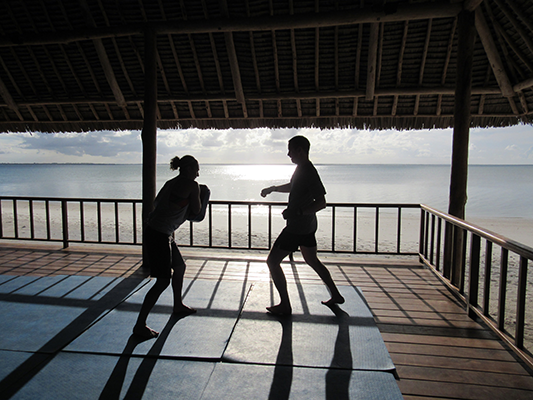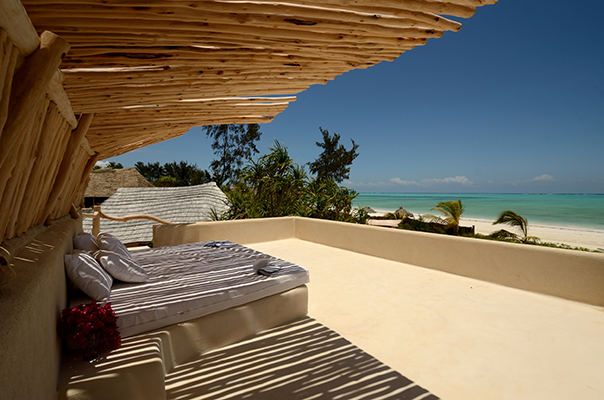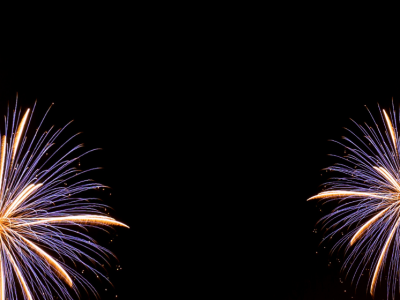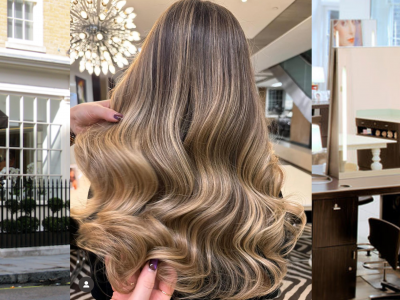It’s 7am in Zanzibar. The sun is blazing and the dazzling sands are blinding me. Sweat is pouring into my eyes. After six kilometres of battering shifting-sand beaches, my brisk jog has faded to a limp, although I’m mindful of what I’ve been taught — shoulders back, upright posture to the horizon, lightly touch the earth (do not land with an thud). One of my trainers is encouraging me: “C’mon Lydia, sprint to that rock, then you can slow down a bit!”
Wildfitness and wildlife in Tanzania
11th April 2016
From wildfitness to wildlife, a reinvigorated Lydia Bell finds Tanzania a captivating location for primal exercise and the perfect safari.
Most of the other guests — a gaggle of business owners, CEOs, CFOs and tech executives, many of whom are repeat clients — are dots on the horizon. Our only companion is a mangy dog.
Welcome to Wildfitness, an unearthly difficult fitness holiday in a heaven-on-earth location. The company’s ethos is simple: we in the office-dwelling West live as caged animals, divorced from our true evolutionary setting, which is nature. We eat foods we have not yet evolved to eat (processed and an excess of carbs) and lock ourselves into gyms doing strange, repetitive routines that don’t use the whole body.
Wildfitness takes us back to a natural exuberance and a paleo-style diet that is more in tune with evolution. This natural fitness — or “wild” fitness as they prefer to call it — involves using the whole body in a dynamic way by practising the key homo sapiens actions of running, jumping, swimming, lifting, fighting and climbing.
Wildfitness involves using the whole body in a dynamic way by practicing the key homo sapiens actions of running, jumping, lifting, fighting and climbing.
The roots of Wildfitness are Kenyan. Tara Wood, who grew up running barefoot on Indian Ocean beaches and has practised kite-surfing, surfing, free diving, parkour and rock climbing, started the company in 2001. She devised her own circuits by moving logs and driftwood around, climbing trees and swimming in the ocean for miles. At some point, these practices evolved into a business idea. What if she brought groups of burned-out Westerners to her Kenyan beach house to reinvigorate themselves doing what came naturally to her? Wildfitness was born. She has since sold the business, which has moved on from Kenya, as holidaymakers are reluctant to visit the country. The retreats can now be found in such diverse locations as the mountains of Crete, the fields of the Isle of Wight and the rolling hills of Andalucia.
Of them all, the closest to the original is in Zanzibar in Tanzania. So here I am, spending a few shoeless days under cornflower-blue skies, doused in bursts of tropical rain, walking on icing sugar-soft beaches, unpeopled apart from occasional Swahili fishermen casting their nets, or the occasional local beauty carrying something enormous on her head.
Our trainer is Anne-Laure Pelletier, an enthusiastic French woman who has left behind a life as a personal trainer at the prestigious Matt Roberts gyms in London. Accompanying her are two Kenyan trainers (one of whom, Joash Akwiry Matakwa, has represented Kenya at 400m). Food isabundant — you can have huge portions and seconds if you want (and I did, because the exercise made me hungry). The focus is on plenty of fresh vegetables, good quality meat and fish and, in this setting, tropical fruits.
This one-week course covers the Wildfitness philosophy through a series of short talks and movement classes while taking you on a roller coaster of outdoor experiences and adventurous training. I find myself walking on a slack line, learning to jump better, piggy-backing a six-foot Dutchman, learning how to box, crawling on my belly, running through lagoons, lifting and carrying heavy logs and sand bags, and swimming at sunset. I start to imagine I’m shooting a scene from Castaway. We play volleyball and Frisbee on the beach, throw logs and endure ‘lactic lifts’ — short, sharp interval sprints that leave you burning with lactic acid and squealing for breath (but the endorphins that kick in produce an insane euphoria).
The Sealous National Park is a Southern Tanzanian gem, its rivers and lakes supporting everything from elephant and hippo to crocodile
There are also plenty of chances for passing out face down on a sun lounger or to have a massage, which, depending on your stage of training, are relaxing or immensely painful. A posture comparison photo is taken at the beginning and end. I see an improvement in posture and in the confidence and the power of my movements.
Wildfitness to me was a way to feel strong, empowered, healthy and free as I edge past my 40th birthday. A proportion of the challenge is psychological. There’s a disconnect between myself and this group of innately competitive people. A good proportion are fitness fanatics, their lives defined by achieving physical milestones. The trick is to find your own place in the Wildfitness trajectory. For me, it takes a while. After the exhaustion of the flight wears off, the memory of the stress of London fades and my body adapts. I feel my weakness turning to strength, my animal spirit rising up. By day four, it’s like I’ve woken up from a winter of hibernation. Sadly, all too soon, I have to leave. It’s terrible dragging myself away, but I am consoled to be headed to another swathe of Tanzania that is equally, magnetically inspiring. This time, I’m on safari.
We head away from the blue haze of the coast. After a quick plane-change in Dar es Salaam, my toy plane bumps down on the red earth of the Selous National Park. Far from the madding crowds of the Serengeti, the Selous is a Southern Tanzanian gem, with precious other tourists to dent yourenthusiasm. Its rivers and lakes support everything from elephant and wild dog to buffalo, hippo, zebra, giraffe, crocodile and lion.
Jason du Plessis from Azura Selous picks me up from an airstrip that only services two lodges (the other is 60km away). Within moments we are at Azura’s luxury lodge in the quiet western fringe of the Selous, its 13 canvas and stone villas beside the Ruaha River. Wallowing in your plunge pool, you look out at the hippos wallowing in the river. The public areas consist of a living room and dining area, both overlooking a circular infinity pool, which, along with one of the plunge pools, has received the occasional hippo guest.
I am dispatched on a late-afternoon game drive with a gracious honeymoon couple with whom I spend a few tranquil days (you rarely get to spend your honeymoon alone on safari). We drive through the tree-covered landscape, dry and brown but greening as the rains get underway, over seasonal rivers and past many, many birds, including vultures, ospreys, and bee-eater birds perched in the trees. We encounter warthogs with their piglets; like tour guides waving a flag on a pole, they run with their tails up in the long grass so their babies can see them.
Soon, our guide Nenga gets a call to let him know a pride of lions has been found. Under a dusty acacia tree, seven are gathered; a lion, lioness and five cubs, sleeping on their backs with their paws in the air. They look rangy; Nenga says they haven’t eaten since killing four buffalo last week.
The laziest animals in the bush, lions can sleep for up to 12 hours straight, preferring to hunt at night when it’s cooler. They work as a team, splitting up to ambush at short distance, biting the neck of the prey, then suffocating it before ripping the bloody soft flesh from the stomach. This talk adds to the nervy fight-or-flight vibe that overtakes me when I get a little too near the large beasts. At one point, the male lion locks its gaze on each of us and his eyes are terrifying. “Hmm,” murmurs Nenga, gently fingering the keys in the ignition. “Maintain eye contact,” he orders. The moment goes on a little too long. In truth, no lion has attacked the park’s vehicles as they tend to see the whole vehicle, not individuals. Nevertheless, Nenga turns the key.
After a sundowner next to the Ruaha River, we head into the black of night for a bush supper. The whole crew of Azura — guests, guides and managers — has decamped to a bonfire location and set up a huge barbecue and a long table. The food is unbelievable: African sausage; spare ribs; chicken; oxtail stew; Swahili cabbage; salads and date pudding. I manage to stagger over to where Jason is delivering a thoughtful talk on stargazing.
Over the next few days we observe the life of the bush: from baboon families with babies on their backs and elephants who head us off with a warning call; from a lone hippo cooling in a water hole and a week-old baby giraffe with its umbilical cord attached to constantly fleeing hartebeest, wildebeest, impala and zebra.
Nights involve eating al fresco, sometimes by the river bed while a Maasai patroller scans with his torch, then going to bed early while listening to the hippos snorting and bellowing like badly played bassoons. On my last day, we take off on foot. The last thing Nenga shows me is a fat millipede he plucks from a leaf — a favourite snack of chimps. He explains that they exude venom whenever they are feeling threatened or unhappy. Back in the air, waving at Nenga until he becomes a little dot in the red expanse, I wipe a tear from my eye as I reflect that, if I lived here, I couldn’t exude venom.
Cazenove+Loyd (020 7384 2332; cazloyd.com) offers a seven-night trip for two people at White Sands Luxury Villas and Spa on the Wildfitness programme, Zanzibar (full board) followed by four nights at Azura Selous in Tanzania (full board). Price includes economy flights from London with Kenya Airways, transfers, activities, workshops and two to three Wildfitness training sessions per day. Prices start from £7,360 per person based on two sharing.









